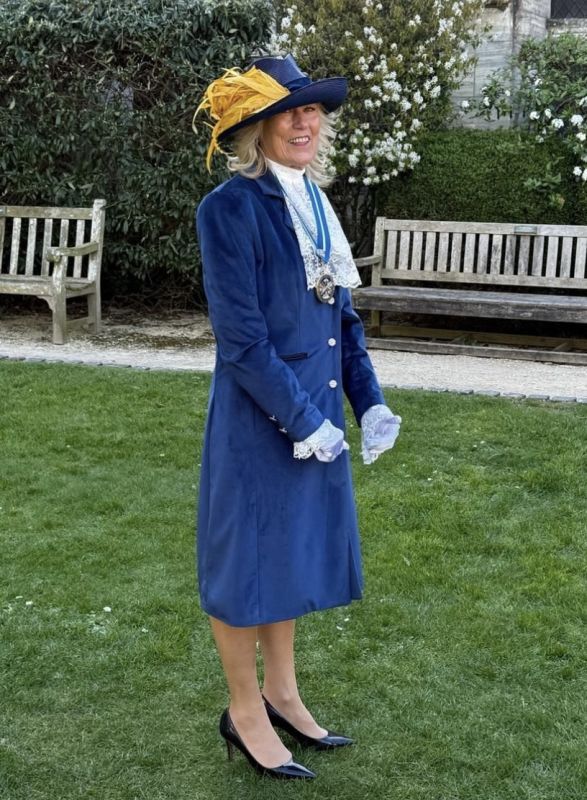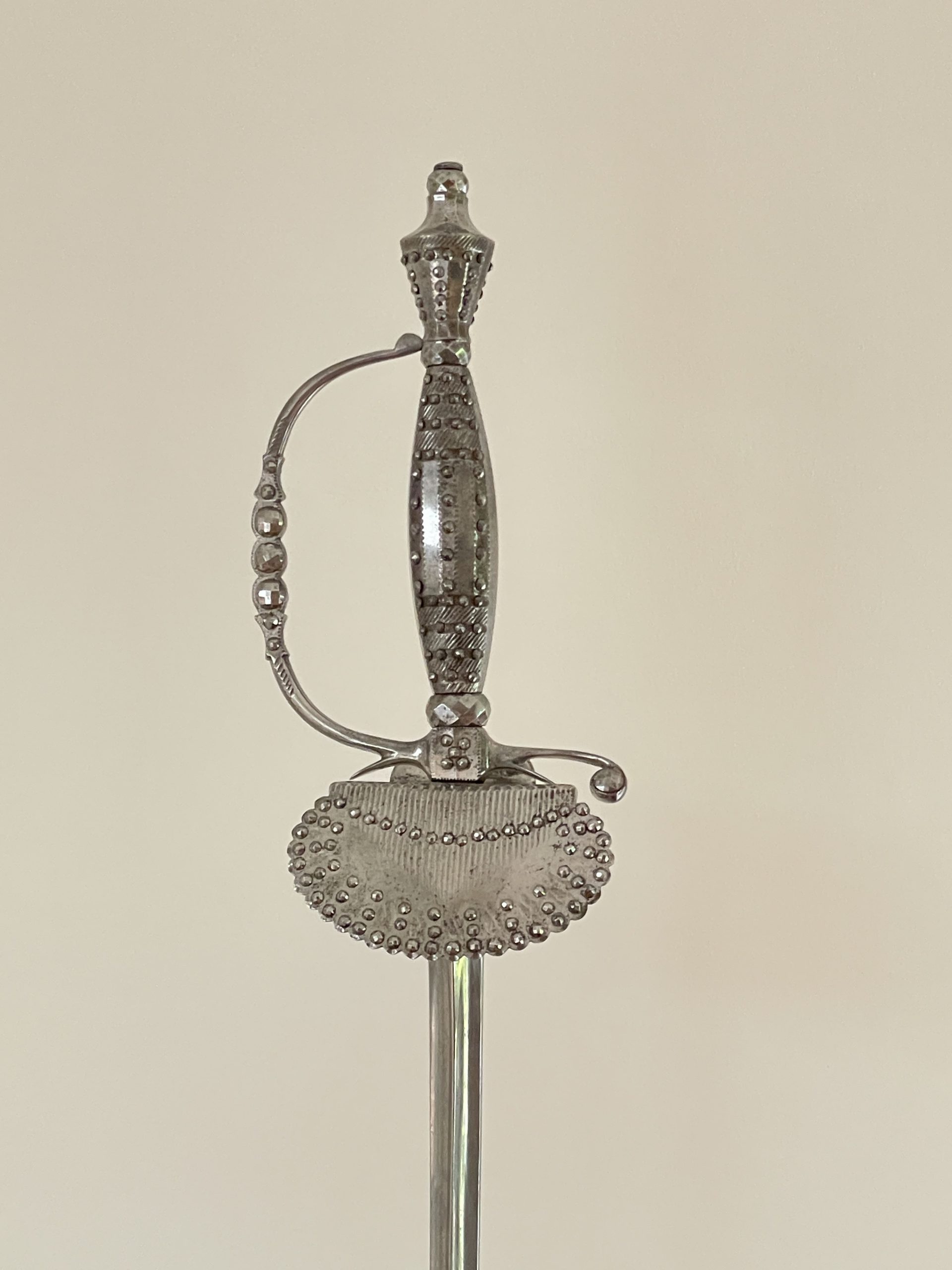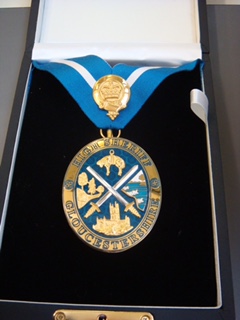The Office of High Sheriff
The key roles of the Gloucestershire High Sheriff, among others, are:
- To actively support and promote the voluntary sector, giving all possible encouragement to the voluntary organisations within Gloucestershire.
- To ensure the welfare of visiting High Court Judges, to attend on them at Court and to offer them hospitality
- To support the Lord-Lieutenant on royal visits and on other occasions as appropriate
The current High Sheriff of Gloucestershire is Julie Kent MBE
How is a High Sheriff appointed?
Three High Sheriffs are nominated annually for each County and are put forward in a meeting of the Lords of the Council in the King’s bench division of the High Court of Justice; the nominations are presided over by the Lord Chief Justice on the 12th November each year. Nominations to the Office of High Sheriff are dealt with through the Presiding Judge of the Circuit and the Privy Council for consideration by The Sovereign in Council.
The selection of new High Sheriffs is made annually in a meeting with the Privy Council by the Sovereign when the custom of ‘pricking’ the appointee’s name with a bodkin is perpetuated.
Eligibility for nomination and appointment of High Sheriffs under the Sheriffs Act of 1887 excludes Peers of Parliament and Members of the House of Commons, and, by extension, Members of the European Parliament or Welsh Assembly, full-time members of the Judiciary, including Special Commissioners or Officers of Customs and Excise or Inland Revenue, Officers of the Post Office, and Officers of the Royal Navy, Army or Royal Air Force on full pay. These provisions reflect the essential requirement that the Office of High Sheriff is a non-political appointment.
Following the ‘pricking’ of the High Sheriff in the Privy Council by the Sovereign a Warrant of Appointment is sent by the Clerk of the Privy Council in the following terms:
‘WHEREAS HIS MAJESTY was this day pleased, by and with the advice of HIS PRIVY COUNCIL, to nominate you for, and appoint you to be HIGH SHERIFF of the COUNTY OF Gloucestershire.
During HIS MAJESTY’S PLEASURE: These are therefore to require you to take the Custody and Charge of Gloucestershire, and duly to perform the duties of HIGH SHERIFF thereof during HIS MAJESTY’S PLEASURE, whereof you are duly to answer according to law.’
The High Sheriff takes up appointment, usually in April each year with the making of a sworn declaration in terms, set out by the Sheriffs Act 1887 before a High Court Judge or Justice of the Peace. The appointment is for one year only except in the event of something untoward happening to a High Sheriff’s expected successor, when a High Sheriff must remain in Office until the appointment of a successor is completed.
Under the Sheriffs Act of 1887 it is the duty of an incumbent High Sheriff to appoint a successor to serve in their county in three years’ time. In Gloucestershire, a Consultative Panel exists which includes independent members and representatives of the Lieutenancy, the Judiciary, the Constabulary and the Media, to assist the High Sheriff in identifying suitably experienced and public spirited individuals prepared to take on what is a highly time-demanding role. The Office of High Sheriff is carried out on a wholly voluntary basis with no part of the expense incurred by the High Sheriff falling on the public purse.
The History of a High Sheriff
The Office of High Sheriff is the oldest continuous secular Office under the Crown. It is at least 1,000 years old having its roots in Saxon times before the Norman Conquest when the “Shire Reeve” was responsible to the King for the maintenance of law and order within the shire, or county, and for the collection and return of taxes due to the Crown. Today, there are 55 High Sheriffs serving the counties of England and Wales each year, although their role is a little different to their historic counterparts.
The High Sheriff office remained first in precedence in the counties until the reign of Edward VII. In 1908, an Order in Council instead gave the Lord-Lieutenant the prime Office under the Crown, as the Sovereign’s personal representative. Lord-Lieutenants were created in 1547 for military duties in the Shires.
Now, the High Sheriff is the King’s Judicial representative in the County, and the Lord-Lieutenant is a personal one. Both roles now have ceremonial roles and responsibilities, particularly compared to the historic roles. The role is an independent, non-political Royal appointment for a period of one year and The High Sheriffs receive no remuneration and no part of the expense of a High Sheriff’s year falls on the public purse.
The history of ‘The Shrievalty of Gloucestershire’ is described in a ten page booklet written by David Smith a former Gloucestershire County and Diocesan Archivist. Copies are available from Gloucestershire Archives.
The Gloucestershire Bailiwick
The territory covered by a High Sheriff is known as his bailiwick and for Gloucestershire this covers the administrative areas of Gloucestershire County Council and of South Gloucestershire District Council. Historically, the Shires (or Counties) of England were divided into ‘hundreds’ for purposes of administration, and Gloucestershire is still mapped in this way by GENUKI

Duties and Responsibilities
High Sheriffs are responsible in the Counties of England and Wales for duties conferred by the Crown through Warrant from the Privy Council. The key objectives of the role include:
- To uphold and enhance the ancient Office of High Sheriff and to make a meaningful contribution to the High Sheriff’s County during the year of Office
- To lend active support to the principal organs of the Constitution within their county – the Royal Family, the Judiciary, the Police and other law enforcement agencies, the emergency services, local authorities, and church and faith groups
- To ensure the welfare of visiting High Court Judges, to attend on them at Court and to offer them hospitality
- To support the Lord-Lieutenant on royal visits and on other occasions as appropriate
- To take an active part in supporting and promoting the voluntary sector and giving all possible encouragement to the voluntary organisations within a County.
High Sheriffs are encouraged by The High Sheriffs’ Association of England and Wales to undertake duties to improve and sustain the morale of personnel of voluntary and statutory bodies, particularly those engaged in the maintenance and extension of law and order and the entire criminal system. It is an independent non-political Office which enables the holder to bring together a wide variety of individuals and Office holders for the good of the community a High Sheriff serves. The High Sheriff has always been associated with keeping the Queen’s Peace. For that reason, visits to all the various courts and agencies associated with the maintenance of Law and Order are very much part of the role together with an interest in the work of Magistrates, Coroners, juvenile and family courts, various forms of tribunal, the Police, Fire and Ambulance services and voluntary organisations.
Find out about the current High Sheriff here >>
The History of a High Sheriff
The High Sheriff’s Uniform: Court Dress
In 1869 the Lord Chamberlain’s office issued new guidelines governing the wearing of Court Dress, and in an effort to standardise the appearance of gentlemen attending at Court, prescribed for the first time a suit of clothes cut from black silk velvet and trimmed with cut steel buttons. Hitherto Court uniform had consisted of a coat and breeches of superfine cloth worn with a floral waistcoat. This in turn had descended from the lavishly decorated court clothes worn during the reign of King George III.
The new, more restrained style of dress, became the regulation uniform for High Sheriffs and retained some of the elements of dress from a previous age. These included a species of folding cocked hat known as a ‘chapeau bras’, which had first made its appearance in the last years of the eighteenth century, and the black silk rosette, the last vestige of the bag wig of the 1740s. The coat itself echoed the style of the 1780s, though the advancement of nineteenth century tailoring techniques lent a more fitted silhouette to this later garment.
Retired military officers who attained 2-star rank or higher are permitted to wear military uniform.
There are no precise regulations governing Court Dress for Lady Sheriffs. However, ladies are encouraged to wear Court Dress buttons and cut steel shoe buckles for their Shrieval outfits, along with a wigbag. Lady Sheriffs do not wear swords, though a cut steel sword may be carried before them in procession.
The High Sheriff’s Sword
The High Sheriff’s Sword is the symbol of the King’s Justice.
The High Sheriff’s Badge
The High Sheriff’s badge displays the swords of Mercy (curtana, with the point cut off) and Justice, both of which are carried at the Coronation of a sovereign, crossed in saltire and above them is the Royal Crown to symbolise this royal appointment.
The badge shown is the High Sheriff’s Badge for Gloucestershire which includes images of a sheep to signify the historic importance to the county and the Cotwsolds in particular, the River Severn which runs through the county, Gloucester Cathedral and The Forest of Dean.



